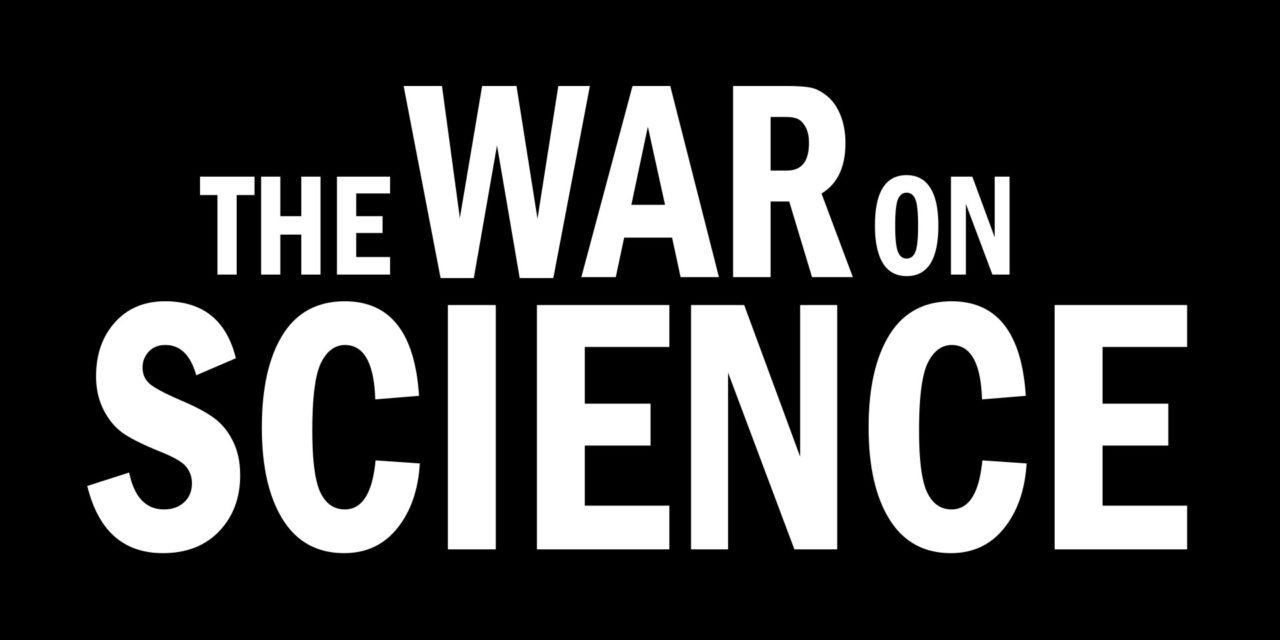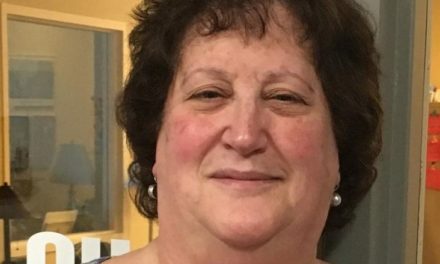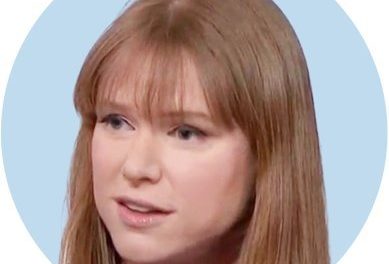Testimony given to the NH State Board of Education on May 11, 2017:
To: Chairman Cline and Members of the New Hampshire Board of Education
From: Ann Marie Banfield, Education Liaison, Cornerstone Action
Date: Thursday, May 11, 2017
RE: Concerns regarding NH Next Generation Science Standards
I come here today to address the Next Generation Science Standards that were adopted in November 2016.
In 2010, the State Board of Education adopted the Common Core Standards in Math and English. From that day, parents and teachers across New Hampshire have been discovering that the Common Core Standards are problematic and need either serious revisions or need to be replaced.
Not only were the Common Core Standards inferior to academic standards that were being used in some states like California and Massachusetts, but the process used to adopt them in New Hampshire was rushed through with little or no critical analysis.
Since 2010 , there have been legislative attempts to remove Common Core from the New Hampshire schools. Parents filled hearings before the House and Senate Education Committees to testify to the numerous problems they were finding with the Common Core Standards. Governor Sununu was elected campaigning to “scrap” Common Core.
The Next Generation Science Standards are another attempt to nationalize Science standards in this country . Even supporters of Common Core, like the Fordham Foundation, exposed serious errors and inadequacies with the NGSS. They ranked the NGSS with a grade of “C” and a numeric score of 5 out of 10. That is a clear indication that the NGSS is another set of mediocre academic standards for New Hampshire’s public school students.
Common Core Math and the NGSS will not help students prepare for STEM careers. Why are we settling for mediocrity again and not equipping New Hampshire schools with the best science standards?
Curriculum is left to the individual schools , but that’s misleading when ninety-two percent of the NGSS include a “clarification statement.” Within the clarification statements, you will find errors in facts, errors in concepts, and overt political indoctrination.
I sent an e-mail to the former Chairman, Tom Raffio, expressing concerns that the decision to adopt the NGSS was made prior to any vote by the Board. For instance, prior to the vote to adopt the NGSS, Bill Duncan indicated the NGSS were going to be adopted and the DoE was indicating the same thing on the No Child Left Behind waiver application. Teachers began using the NGSS in their schools, and I can only wonder if they figured the NGSS were on their way whether they approved or not. I think at that point, everyone felt the fix was in, the NGSS would be adopted.
How often have we heard the importance of teaching students to think critically? This was one of the most important decisions on science standards , and there was no critical analysis by those who were testifying in support of their adoption. How can we expect students to critically think when education experts were failing to conduct their own critical analysis?
No college – level content experts offered any critical analysis comparing NGSS, NH Science Standards, and state standards that were considered the best in the country. No college – level content experts offered any suggestions on what could be added, deleted or changed to the NGSS if they were adopted. No one on the Board asked these important questions during the hearing, either.
I heard no discussion on whether the NGSS could be improved by adding/deleting/changing the standards to improve upon them. The hearing to adopt the NGSS appeared more of a formality than a thoughtful analysis of whether the NGSS would be the best science standards for our public schools.
The NGSS have distinctly different priorities from previously published K-12 science standards. An example would be the the prominent role in NGSS of evolution and climate change.
While the NGSS claims that the focus will now be on deeper understanding and application of knowledge, that focus comes at a big price because there is a great deal of content missing.
What are some of the more glaring omissions in the NGSS?
1) Not enough chemistry for a stand-alone high school chemistry class
3) The life science standards lack a considerable amount of biology, including whole body systems, cell and tissue types, cellular feedback mechanisms, protein structure and function, cell division (mitosis and meiosis), bacteria and virus.
4) Physical Science omissions include: Newton’s first law, energy, thermodynamics, Ohm’s law, simple electrical circuits, and lab safety.
5) The scientific method is absent .
Stan Metzenberg, Ph.D. , Professor of Biology at California State University Northridge, prepared an analysis of the NGSS when they were under consideration in Massachusetts:
1) Pre-Kindergarten to Grade 8 and introductory high school courses have significant, unacceptable gaps in science content, as well as some notable errors and inaccuracies.
2) The standards are stunningly devoid of Mendelian genetics and large parts of cellular biology. This is an astonishing oversight for a state that has notable institutions of higher education and a thriving biotechnology industry.
3) The principles of evolutionary biology are incomplete and sometimes incorrectly stated.
4) The standards are largely unintelligible because of abuses of the language, and
they are sometimes grammatically incorrect.
5) NGSS does not support the stated purpose of standards, to indicate what students should know and be able to do.
6) These draft standards do not include any high school exposure to the nucleus, mitochondria, or chloroplasts.
7) There is a complete absence of Mendelian genetics at the high school level, despite the promising language on p.51 (titled p. 49) of the draft .
Dr. Metzenberg concluded, “I recommend that the draft be withdrawn from further consideration.”
Dr. Metzenburg has 20 years’ experience in university teaching in biological science. He was a Senior Science Consultant for the Academic Standards Commission in California (1998) and was a State Board of Education appointee to the California Science Project (1999-2003), the California Curriculum Development and Supplemental Materials Commission (4 year term, 2003- 2006), and a content review panelist for development of the California Standards Tests (1999-2010). He has recently assisted the ministries of education of Saudi Arabia (2010) and Qatar (2015) in training teacher leaders to use newly adopted science instructional materials.
Modeling, versus actual science facts, is a key component of the NGSS. This will guarantee a dumbing down of science education and reflect the political bias behind it.
These new science standards rely on models at every grade level including kindergarten. In the early grades, they are mostly pictorial. They increase in complexity as the student gets older. By the time the students reach high school, critics warn that the large amount of math, using complex models, goes beyond the cognitive ability of most high school students. Because the Common Core math standards are inferior, this puts the high school student at a disadvantage compared to students well – educated in mathematics.
Models can help students understand complex relationships. The pictorial models in the lower grades make sense , since the younger students’ cognitive skills have not been fully developed. The problem arises when the models become the complex mathematical constructs required in the NGSS.
While the NGSS will be sold as a way to get kids to think in these complex terms, expertswarn that will not happen.
In the Weather and Climate section of the High School Standards, students are supposed to:
Analyze geoscience data and the results from global climate models to make an evidence-based forecast of the current rate of global or regional climate change and associated future impacts to Earth systems.
There is an assumption that the climate models will accurately show what is happening in the real world. Students will not be able to verify that.
The Standards go on to require the student to construct models by building on k-8 experiences and progresses to use, synthesize, and develop models to predict and show relationships among variables between systems and their components in the natural and designed worlds, using models to provide mechanistic accounts of phenomena.
The student is then required to analyze the data and move on to more detailed statistical analysis, comparing data sets for consistency and using models to generate and analyze data. Students must then analyze data using computational models in order to make valid and reliable scientific claims.
Students are supposed to meet these science standards on climate change, yet experts in this field have failed to predict future temperatures. Experts warn that climate-changemodels should be used sparingly, and never used as final proof of man-made global warming.
The NGSS call for empirical evidence, which is good. Empirical evidence means real, observable relationships and data . Models are not empirical evidence. There is a conflict between science and overuse of models, based on empirical evidence. When there is a reinforcement of possible errors, there is a real potential to create incorrect conclusions. When errors are reinforced year after year through the NGSS, those errors will be hard to correct when the students become adults. This is especially concerning to those looking at the bias in the Disciplinary Core Ideas of the Human Sustainability: Weather and Climate.
Current models predict that, although future regional climate changes will be complex and varied, average global temperatures will continue to rise. The outcomes predicted by global climate models strongly depend on the amounts of human-generated greenhouse gases added to the atmosphere each year and by the ways in which these gases are absorbed by the ocean and biosphere.
Temperature data shows the opposite of the Disciplinary Core Idea
1) Is there global warming? This answer rests in unsettled science.
2) Can global warming be modeled with routine success? No, and those who were skeptical of the models are proving to be wiser than the elitists who once ridiculed them.
Judith Curry, who is a climatologist and former chair of the School of Earth and Atmospheric Sciences at the Georgia Institute of Technology, has pointed out the uncertainties and deficiencies of climate modeling. (http://journals.ametsoc.org/
Dr. John Christy, has researched climate issues for 27 years, and was a lead author — in essence, an editor — of a section of the 2001 report of the United Nations Intergovernmental Panel on Climate Change, the definitive assessment of the state of global warming. With a colleague at the University of Alabama in Huntsville, Dr. Roy Spencer, he received NASA’s medal for exceptional scientific achievement in 1991 for building a global temperature database. Dr. Christy says the climate models are worthless (https://www.nytimes.com/2014/
My point is not to debate the causes of global warming, but to bring forth information that should have been discussed prior to adopting the NGSS. Why wasn’t this information presented at the New Hampshire hearing on NGSS ? Why wasn’t this information discussed in an effort to determine if NGSS is the best way to teach science in our public schools?
The NGSS at each grade level includes standards on sustainability. “Sustainability” is a political term, not a scientific one and it requires the student to believe there is a need to live sustainably. Two decades ago, no one used the term “sustainability,” Critics argue that instead of learning real science, the standards show a bias towards a political outcome.
Under NGSS, kindergarten students will be taught to “communicate solutions that will reduce the impact of humans on the land, water, air and/or other living things in the local environment.”
This political theme goes on throughout the NGSS by requiring middle school students to understand how to:
“Apply scientific principles to design a method for monitoring and minimizing a human impact on the environment. ”
“Construct an argument supported by evidence for how increases in human population and per-capita consumption of natural resources impact Earth’s systems.”
Since the focus is on the negative impacts of human beings, the standards can be compared to dogma. This is a worldview on sustainability, and it calls for human activity to be regulated in order to stop the damage.
Most of us understand the need to be good stewards of the earth,but the NGSS are riddled with political overtones. The NGSS thus are used more as indoctrination than asvalid science standards used to elevate science literacy.
Property Rights
Even property rights are under attack in the NGSS. If human beings are the problem, property rights must also be restricted and possibly eliminated.
“Urban planning”
( HS-ESS3-3 ) is included in the standards as a way to reduce human impact on the environment . Urban planning is a way of controlling property rights through growth boundaries, high-density housing, fewer cars, and more public transportation. This puts the government in control of development and land use. If New Hampshire is going to use political dogma as science standards, there should be an emphasis on the importance of private property rights , too.
With the emphasis on carbon dioxide emissions and how emissions relate to the economy, the NGSS makes carbon dioxide reduction and urban planning into tools to prevent global warming. That is a social and political goal, but not a scientific one. By having students focus on social issues, the NGSS indoctrinates students into a political ideology that fosters giving the federal and state governments control over the economy and our lives.
Public schools will graduate students with a new world view, but those students will not be prepared for a career or college in the science field. As one science educator of 24 years says, “The Next Generation approach is designed to develop ‘global citizen’ awareness , and ignores the needs of high achieving and most average students at the secondary level who already have clear career goals in mind.”
The Common Core Standards and the Next Generation Science Standards are low-level standards that will teach children some academic content, but will not give them the quality they need, if they have higher aspirations. Several states had superior science standards prior to Common Core. New Hampshire students are being shortchanged when our Commissioner is denied authority to review higher quality science standards for our children.
The older, superior California Science Standards were developed with assistance from Glenn Theodore Seaborg, one of the foremost scientific minds of the twentieth century. If we really want our kids to be able to compete in the world or for admissions to our top colleges, we need to stop settling for mediocrity.
When the Board voted to shut down Commissioner Edelblut’s attempt to revisit the NGSS, Board member Helen Honorow asked what’s missing from the Science Standards. Why wasn’t all of this part of the review when the Board voted for the NGSS? The adoption appeared to be a formality that lacked any substantive critical analysis on the NGSS. Had this information been discussed by the board, we’d have a better understanding as to why the board members wouldn’t consider making improvements to the NGSS.
It causes me a great deal of concern that there was a vote by this board to deny Commissioner Edelblut the ability to revisit the NGSS in an effort to analyze the standards and possibly make improvements to them. I’ve mentioned just a small number of problems that science content experts have identified with the NGSS. While the process to adopt the NGSS appeared to be more thoughtful than that for the Common Core Standards, the inability to fully analyze and debate whether these standards are the best for New Hampshire students leaves people like me disappointed by this important decision made by the Board of Education.
My hope is that board members will reconsider that decision, start to look honestly at the criticisms of NGSS, and reverse their harmful vote. As Jennifer Helms, PhD RN , described the NGSS, ”This “overarching goal” makes it clear that the NGSS are intended to be a set of science appreciation standards rather than rigorous educational standards. “
Our kids deserve better in New Hampshire. They need to be prepared to enter a scientific field in college if they choose that path. NGSS will not prepare children in our public schools, and that will fall on your shoulders if you refuse to make the improvements that are needed.






This whole debate is just so deliberately confusing. I don’t have a BS PHd like so many of the professionals have but I’m an old guy who has been reading, watching and listening for a long time and I have not seen anything that improves on the Biology, Math, Chemistry and Physics I learned at Keene High School. The math we learned, from Algebra thru plane and solid Geometry had been evolving since the time of Aristotle and gave Newton the foundation upon which to build Calculus. Clearly there’s been new knowledge learned in the last sixty years but it builds on the established foundation. We’ve arrived at six years old to start school because that is when most kids are ready to master the real world, analog based fundamental tools for reading, writing and arithmetic, With all due respect to Jefferson, all men are not created equal. Some are quicker and some slower but most are ready by that age. If we choose to provide subsidised day care for younger kids so be it but that time ought to spent in socialization and group play. Academic skills acquired tat early completely meaningless by 3rd or 4th grade. By that time smart kids have shown their potential and ought to be encourage, and slow kids have shown their limited capacity and ought not to be pressed to handle knowledge they just don’t have ability to master. That sounds elitist but it is really just facing up to the real world. The Educationist Bureaucracy and the NEA and AFT are so firmly dug in that not much can be done but providing ESAs and encouraging caring parent to seek the best education for their kids can be the first, best change we can make to begin repairing our public education system.